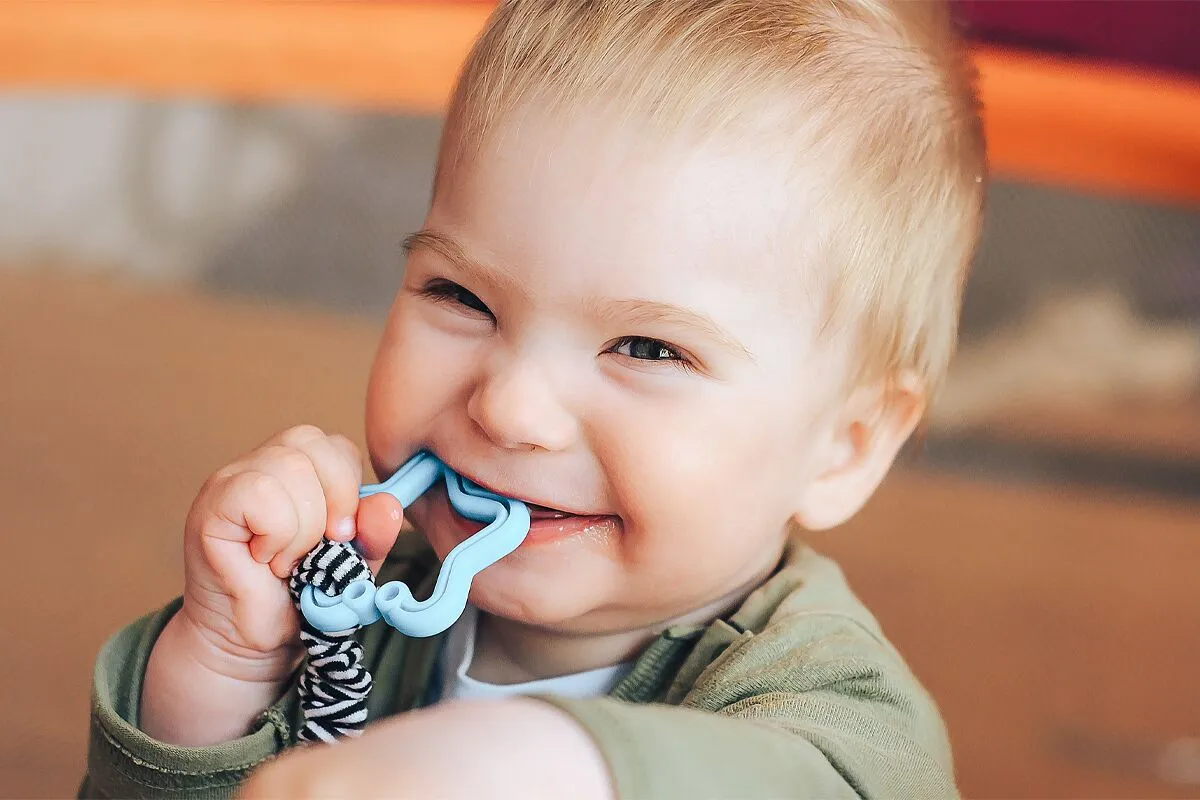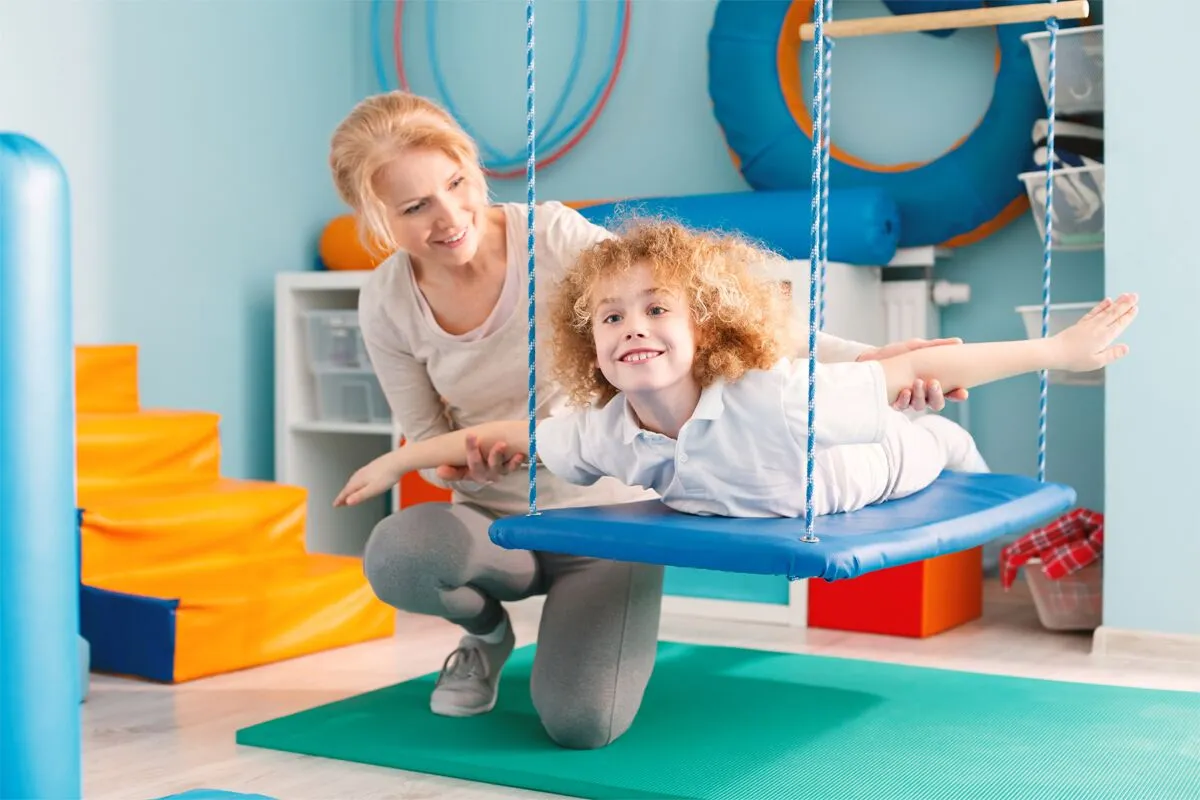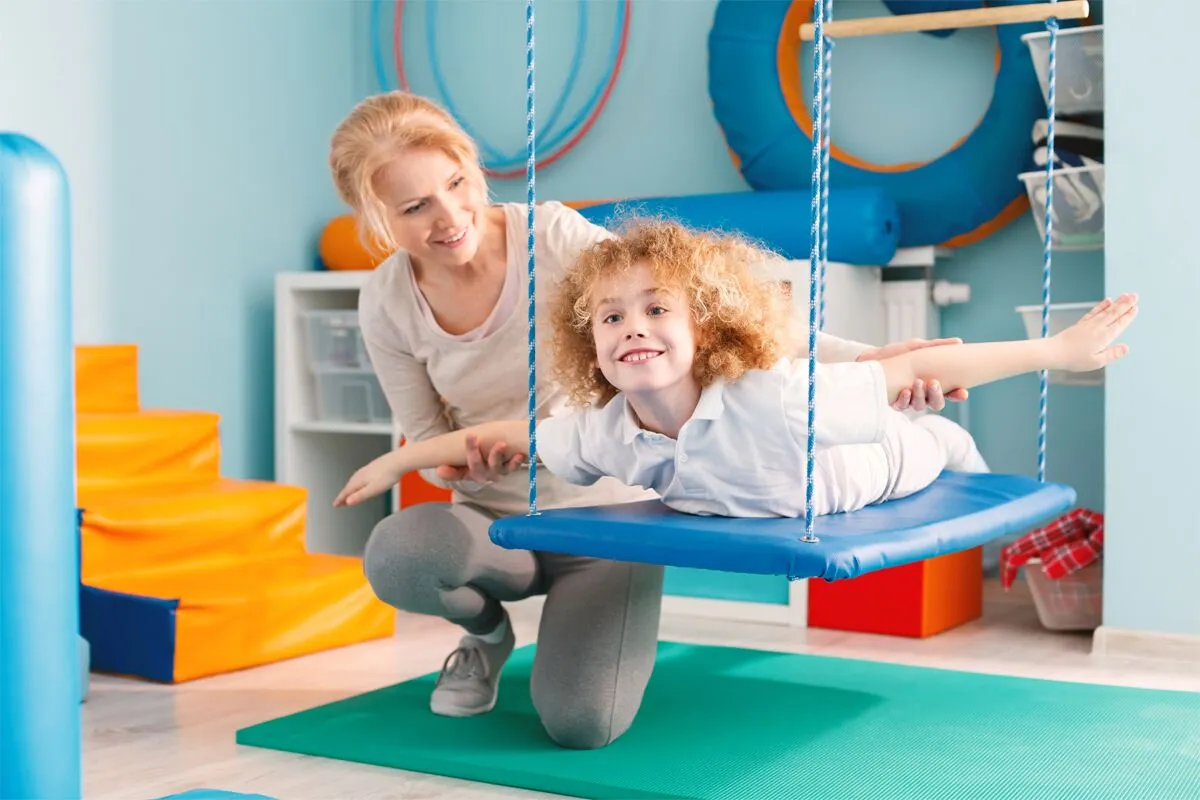Compared to kids their age, does your child often react unusually to daily situations?

- Seem to be unusually sensitive to light or noise
- Complain often about tight shoes or scratchy clothes
- Act more clumsy
- Have difficulty with fine motor skills (like holding a pencil)
- Be more prone to tantrums than other kids (for no apparent reason)
What is a Sensory Processing Disorder?
Sensory Processing Disorder (SPD) is a neurological disorder in which the sensory information an individual perceives results in abnormal responses.
To put it another way, children with sensory issues may have an aversion to anything that triggers their senses (smell, light, sound, touch, or taste).
- Uncoordinated
- Hard to engage in conversation or play
- Unable to tell where their limbs are in space
- Unable to tell where their limbs are in space
- Having trouble understanding themselves
- Struggling to make friends or be part of a group
- Having a hard time learning new concepts, which can lead to academic failure

The 3 Most Common Solutions to SPD
There are several ways to treat SPD! Below are the 3 most common ones.
1. Make Adjustments at School
- Eliminate buzzing or flickering fluorescent lights wherever possible
- Place your child in a seat as far away as possible from any distracting source of noise
- If your child needs to move a bit, you can give them an inflated stead cushion from home so he/she can squirm while staying in their seat


2. Make Lifestyle Changes
As different children with SPD are affected by different stimuli, you may need to make lifestyle changes based on what impacts your child the most.
For instance:
- If your child dislikes even the slightest of noise, give them sound-blocking headphones
- If he/she cannot tolerate any offending odor, placing a fragrant sachet in their pocket to cover offending odors may help
- If they struggle with foods, try investing in a book like The Sneaky Chef or Deceptively Delicious to learn strategies for making healthy foods more appealing to your child.
3. Try Chewy Toys or Sugar-Free Gum
- Reduce biting
- Reduce anxiety
- Reduce fidgets
- Reduce chewing on clothes and fingers
- Increase focus

For toddlers, we recommend using chewy toys.
For preschoolers, tweens, and teenagers, we recommend sugar-free, low-flavor gym. That way, the focus is on sensory input – and not on something yummy!
Although those 3 solutions can help your child deal with his/her sensory issues, they still can’t serve as a substitute for therapy, which is the most effective way to treat SPD.
How Occupational Therapy Can Help

Occupational therapists (OTs) are specialists who treat kids with sensory issues.
When you visit an occupational therapist, he/she will start by evaluating your child’s condition before moving on to deciding what kind of treatment will work best.
Once the evaluation is finished, the OT will offer a treatment plan designed to give your child the right amount of stimulation to make them feel more secure, focused, and comfortable.
For instance, treatment activities may include:
- Rolling on huge balls
- Jumping into a ball pit
- Bouncing on a large ball
- Spinning in a protected sling
- Crashing into a mountain of huge pillows!
Besides these sensory activities, OTs use three more treatment methods.
1. Brushing
OTs use a procedure called brushing that involves using a soft-bristled brush to provide deep pressure, followed by joint compressions to ease symptoms of SPD.
It helps children deal with “normal†sensations that they find irritating or unpleasant, such as walking barefoot, the feel of clothing against their skin, or being touched by another person.
Your OT will teach you how to perform brushing so that it can also be done several times a day at home.


2. A Sensory Gym
A big part of occupational therapy takes place in a sensory gym – a setting outfitted with specialized equipment that allows kids to safely spin, swing, and crash into padded surfaces.
Most sensory gyms also contain items like weighted vests and “squeeze machines†to provide deep pressure that is calming and soothing to kids with SPD.
3. A Sensory Diet
Last but certainly not least, your child’s OT will also design a sensory diet. A sensory diet is basically a custom-made sensory treatment plan that you can carry out at home!
All activities in a sensory diet are designed to give your child the stimulation he needs to become comfortable with “normal” sensations that he experiences on a regular basis.

- Getting a foot massage
- Using a vibrating toothbrush
- Jumping on a mini trampoline
- Pushing a grocery cart or stroller
- Having some fun at the playground
- Drinking cold water and eating crunchy or chewy foods

One last piece of advice: don’t wait!
As soon as you see any sign of a sensory processing disorder, book an appointment with an occupational therapist to diagnose your child right away.
When it comes to your children, you should trust your parental instincts and have your child evaluated as early as possible. The sooner you see an OT, the better the outcome will be!
